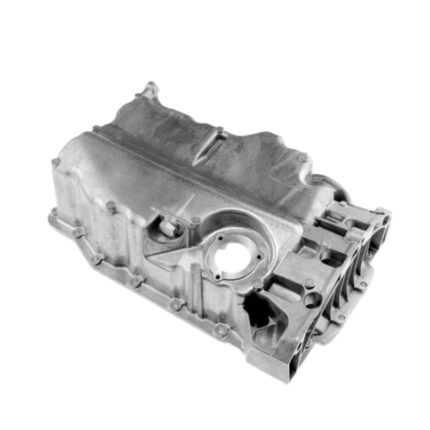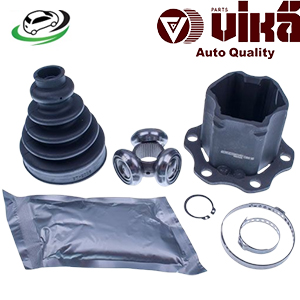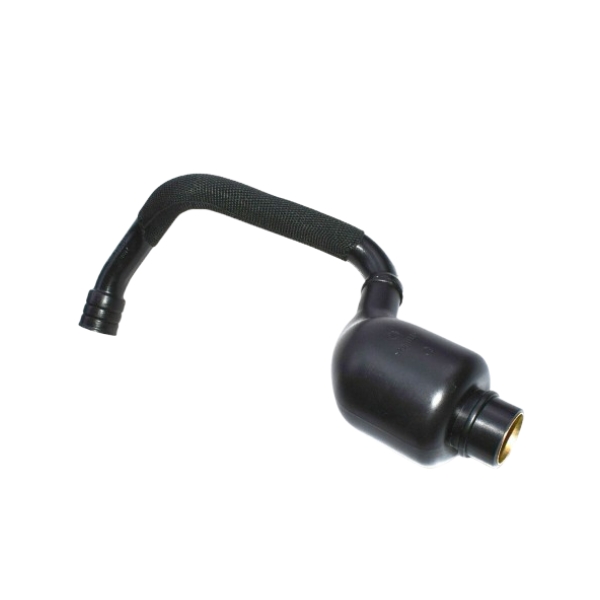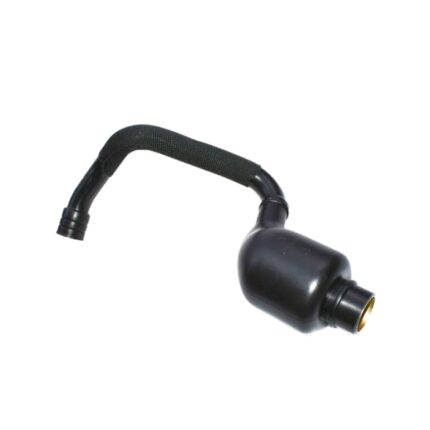Get Audi A4 A6 Breather Hose Valve 06B103211H in Kenya
The breather hose valve, also known as the crankcase ventilation valve or PCV (Positive Crankcase Ventilation) valve, is a crucial component in the internal combustion engine’s ventilation system. Its primary function is to manage the gases produced during the engine’s operation, ensuring that the engine runs efficiently and remains environmentally friendly. This guide will explore the design, function, benefits, symptoms of failure, and maintenance of the breather hose valve, providing a thorough understanding of its role in vehicle performance.
1. Understanding the Breather Hose Valve
a. The Role of the Breather Hose Valve: The breather hose valve is part of the Positive Crankcase Ventilation (PCV) system. The engine generates various gases during combustion, some of which leak past the piston rings into the crankcase. These gases include unburned fuel, oil vapors, and other combustion byproducts. If left unchecked, these gases can cause pressure build-up in the crankcase, leading to oil leaks, engine wear, and increased emissions. The breather hose valve regulates the release of these gases, directing them back into the engine’s intake manifold to be burned off in the combustion process.
b. How It Works: The breather hose valve operates by controlling the flow of gases from the crankcase to the intake manifold. It uses the vacuum created in the intake manifold to pull the gases out of the crankcase. The valve adjusts its opening based on engine load and speed, ensuring that the right amount of gases is recirculated. During idle or low-speed operations, the valve remains partially open to allow a small amount of gas flow. At higher speeds, it opens wider to manage the increased pressure and gas volume.
c. Components of the Breather Hose Valve System:
- Breather Hose: Connects the crankcase to the intake manifold, allowing gases to flow through.
- PCV Valve: The core component that controls the gas flow.
- Oil Separator or Catch Can: Filters out oil droplets from the crankcase gases before they reach the intake manifold.
2. Benefits of the Breather Hose Valve
a. Reduced Emissions: One of the most significant advantages of the breather hose valve is its role in reducing harmful emissions. By redirecting the crankcase gases back into the engine for combustion, it prevents these gases from being released into the atmosphere, thus reducing the vehicle’s overall emissions.
b. Improved Engine Efficiency: The breather hose valve ensures that the engine operates smoothly by preventing pressure build-up in the crankcase. This pressure control helps maintain the integrity of engine seals, reduces the risk of oil leaks, and ensures that the engine operates at optimal efficiency.
c. Prevention of Engine Oil Contamination: By venting the crankcase gases through the breather hose valve, the system prevents these gases from mixing with the engine oil. This separation reduces the risk of oil contamination, which can lead to sludge formation and degraded lubrication, ultimately extending the life of the engine oil and improving engine longevity.
d. Enhanced Engine Longevity: The regulation of crankcase pressure and the prevention of oil contamination contribute to the overall health of the engine. By ensuring that the engine runs at optimal conditions, the breather hose valve helps extend the life of engine components, reducing the need for repairs and replacements.
3. Symptoms of a Failing Breather Hose Valve
a. Poor Engine Performance: A faulty breather hose valve can lead to a variety of engine performance issues. These may include rough idling, stalling, or a decrease in overall engine power. The engine may struggle to maintain a steady idle speed, and acceleration may feel sluggish or uneven.
b. Increased Oil Consumption: If the breather hose valve is not functioning correctly, it can lead to an increase in oil consumption. This is due to the unregulated pressure in the crankcase, which can force oil into the combustion chamber or cause leaks through the engine seals.
c. Oil Leaks: A failing breather hose valve can cause excessive pressure in the crankcase, leading to oil being pushed out through seals and gaskets. This can result in noticeable oil leaks around the engine, which can lead to more significant issues if not addressed.
d. Check Engine Light: Modern vehicles are equipped with sensors that monitor various engine parameters, including the PCV system. A malfunctioning breather hose valve can trigger the check engine light, often indicating an issue with the emissions control system.
e. Contaminated Air Filter: A faulty breather hose valve can allow oil vapors to enter the intake system unchecked, leading to oil deposits on the air filter. This contamination can reduce airflow to the engine, further impairing performance and efficiency.
f. High Emissions: If the breather hose valve is stuck open or closed, it can lead to improper combustion, resulting in higher-than-normal emissions. This issue can cause the vehicle to fail emissions tests and contribute to environmental pollution.
4. Causes of Breather Hose Valve Failure
a. Age and Wear: Like all mechanical components, the breather hose valve can wear out over time. The constant exposure to oil vapors, heat, and combustion gases can cause the valve to degrade, leading to failure.
b. Contamination: The breather hose valve can become clogged with sludge, carbon deposits, or other contaminants. This blockage can prevent the valve from functioning correctly, leading to restricted gas flow and crankcase pressure issues.
c. Incorrect Installation or Maintenance: Improper installation of the breather hose valve or neglecting regular maintenance can contribute to premature failure. It’s essential to follow manufacturer guidelines for replacement and servicing to ensure the valve operates correctly.
5. Maintenance and Replacement of the Breather Hose Valve
a. Regular Inspection: Routine inspection of the breather hose valve and related components is essential for maintaining engine health. Look for signs of wear, damage, or contamination. Ensure that the hoses are free from cracks or leaks and that the valve operates smoothly.
b. Cleaning the Valve: In some cases, cleaning the breather hose valve can restore its function. Carefully remove the valve and clean it with a suitable solvent to remove any carbon deposits or sludge. However, if the valve is significantly damaged or clogged, replacement is recommended.
c. Replacement: Replacing the breather hose valve is a straightforward process that can be done during regular maintenance intervals, such as during an oil change. Always use a high-quality replacement part that meets the manufacturer’s specifications to ensure optimal performance.
d. Cost Considerations: The cost of a breather hose valve can vary depending on the make and model of the vehicle. However, it is generally an affordable component, and the benefits of maintaining a properly functioning valve far outweigh the cost of replacement.
e. DIY vs. Professional Service: While many vehicle owners may be comfortable replacing the breather hose valve themselves, those unfamiliar with engine components should consider seeking professional service. A qualified mechanic can ensure that the valve is installed correctly and that the entire PCV system is functioning as it should.
Follow us on Facebook for more parts.




